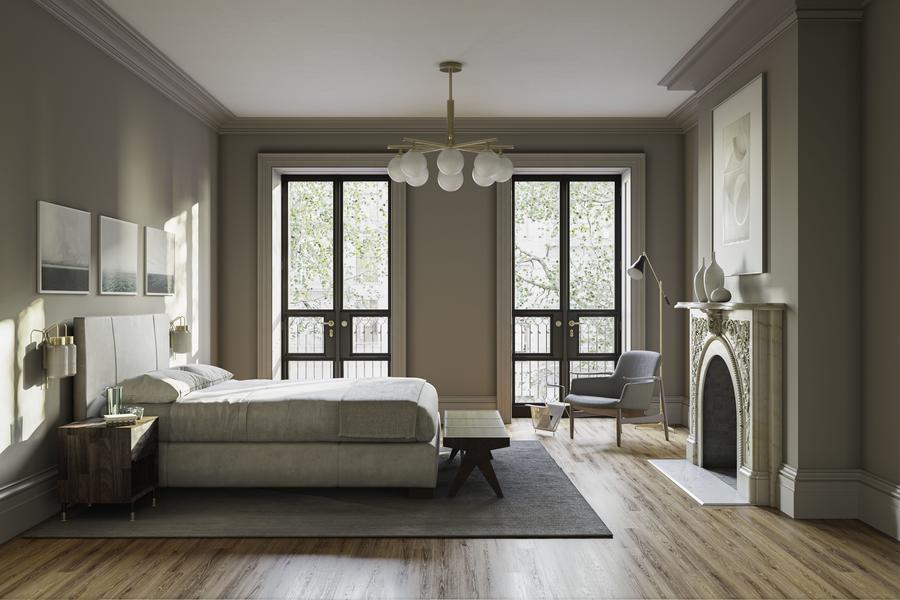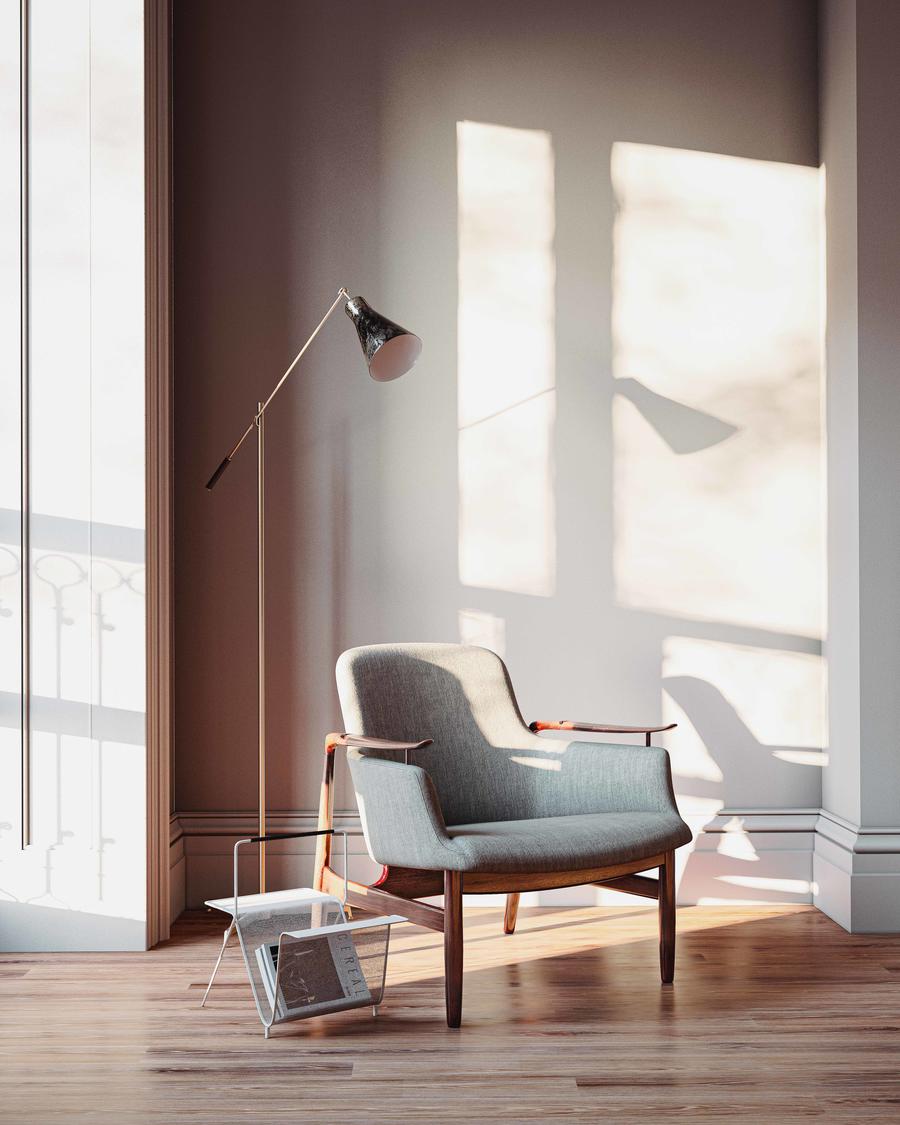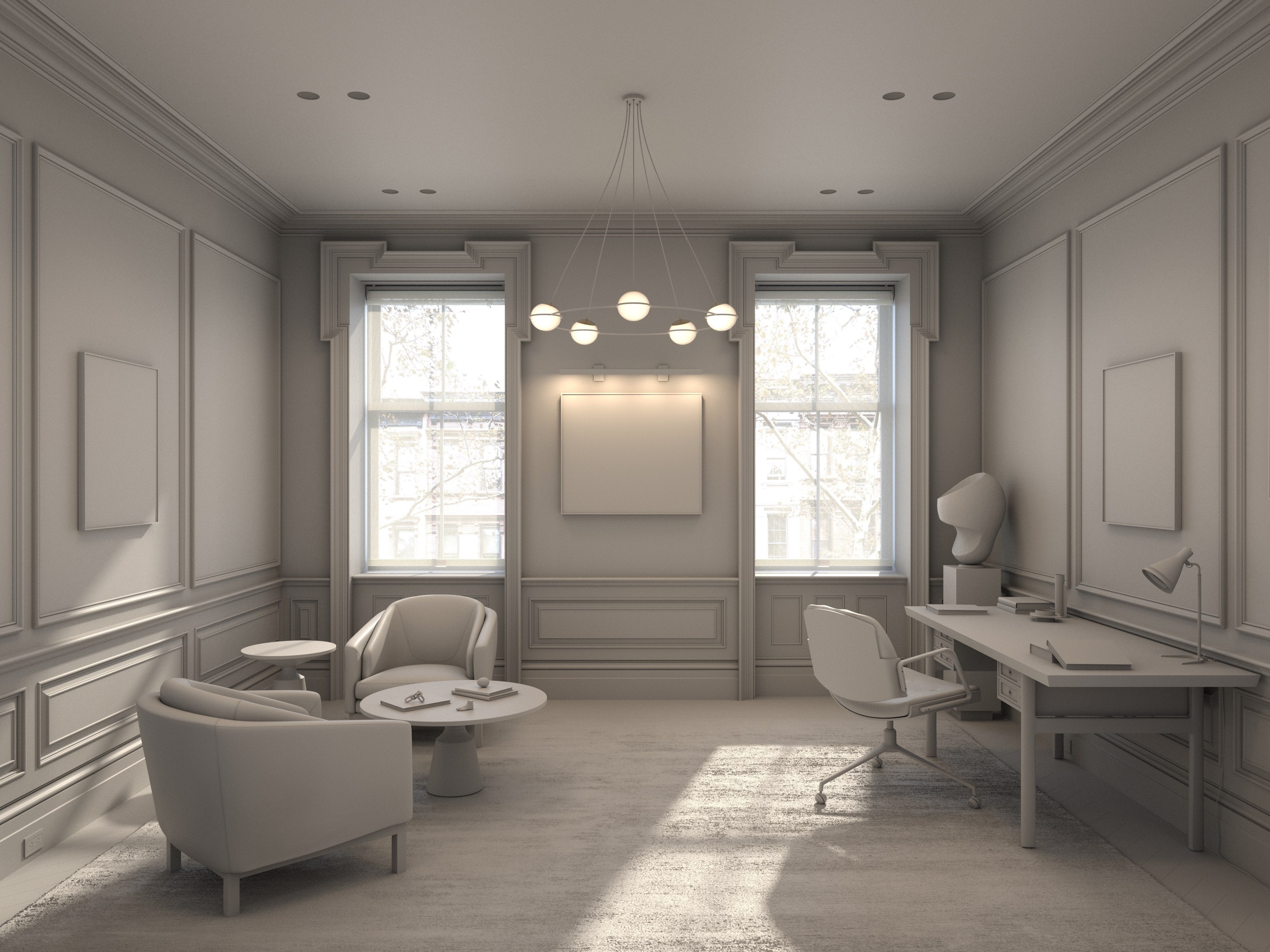It’s an uncanny experience that will be familiar to most designers: You’re looking at a photo of a beautiful room, admiring the sofa and a particularly chic mirror, and then it hits you: Wait—this isn’t actually a photograph.
Ten years ago, most computer-generated interior design renderings looked like outtakes from The Sims. In recent years, they’ve gotten good—scary good. And as quality has gone up, so have expectations. Increasingly, the firms that make digital renderings are using the technology not just to present a clean, photorealistic image, but to evoke an emotion in the viewer. It’s less “What will this room look like?” and more “How will this room feel?” To evoke those feelings, some rendering agencies are looking to an unexpected place: Hollywood.
Amir Karimpour, the co-founder of Alden Studios, a Brooklyn-based visual effects company that works with architects and designers, has an ideal background for his line of work: He studied architecture at Pratt and Yale, then visual effects at Harvard. Karimpour speaks just as enthusiastically about modernism as he does about the texture of digital fur in Simba’s mane.
“Every production studio in Hollywood now has the ability to seamlessly superimpose people into CGI settings,” he says. “Take the new version of The Lion King, a pivotal film for the special effects industry, where they were able to make those animals look photoreal. If we can replicate something like that, surely we can apply those tools to something stagnant, like architecture.”

Sometimes, Karimpour’s company uses technology lifted directly from the silver screen. Foliage, for example, has long been a sticking point for renderers. A surefire way to tell a computer-generated room from a real one has been to look out the window, as digital vegetation often has a cartoony quality. To get around the problem, Alden uses a piece of software originally developed to make the alien trees in James Cameron’s Avatar look realistic. “[Cameron] hired a botanist computer programmer from South Carolina to make this program called SpeedTree,” says Karimpour. “The learning curve is so steep, but that’s the software we use for all our vegetation, which makes a world of a difference.”
Even when his firm is using more traditional rendering tools, Karimpour takes an approach informed by detail-obsessed auteur filmmaking. The key to photorealistic renderings that can trick the eye (and stir the heart), he has found, are imperfections. Even a brand-new chair will have slight imperfections and, particularly if you’re trying to render antiques, there are going to be small scuffs on wood finishes or slightly faded fabrics. “It’s those subtle imperfections—your eye registers them from far away and then immediately thinks it’s a photograph because it’s so used to picking up imperfections in real life,” says Karimpour. “Many architects want everything to look perfect, which is why the renderings they use can look too artificial.”
The impact of Hollywood-quality work and the flexibility of digital technology offers up a compelling package for designers and architects. Drew Lang, a New York–based architect, had designed a Chelsea townhouse for a client, but wasn’t able to stage and photograph it before the family moved in. So he worked with Alden Studios to virtually furnish the townhouse. “What we found out is that we had a lot more flexibility than we do when we take photographs,” says Lang. “When we take photographs, the condition is what it is. The light condition, for example, is a fixed moment in time versus this process of building it out with infinite flexibility.”
While not all renderings are going to be movie-quality, the overall popularity of renderings is undoubtedly increasing. E-design platforms like Modsy, Decorist and Havenly offer 3-D renderings in their packages, suddenly making them an option for clients at a wide range of budgets.
Are renderings poised to become something that clients expect from the interior design process? They’ve already become such an integral part of New York–based designer Alyssa Kapito’s firm that she’s currently looking to hire a full-time, in-house renderer. “Commercial clients in particular are really asking for them,” she says.

Having the position integrated into your practice may seem like a bold step, but considering how much individual renderings from an outside studio like Karimpour’s can cost, a salaried employee doesn’t seem like such a luxury. At Alden Studios, a single interior shot can cost up to $4,000; an exterior of a New York City residential tower could run up to $8,000. (The price range depends on the detail, nuance and difficulty of the render.) But as more clients come to expect to see high-quality renderings as part of a standard design process, it’s not hard to foresee a future in which having a full-time staff renderer is as commonplace as hiring a bookkeeper or project manager.
“I think that what is going to happen inevitably is that clients and designers will start to see what this technology is capable of,” says Lang. “People will start asking for it more frequently, and more people will develop the skills to do these at a higher level.” As word gets out, he says, increasing demand is inevitable: “When they realize what’s possible, clients are going to want this.”
The technology, however, isn’t without its risks. “In one of the first projects we rendered, an Australian housing project, I put in trees in places that trees didn’t exist, to make the image look better,” says Karimpour. “One investor came and bought three townhouses in a row. He moves in two years ago and he’s asking where his jacaranda trees are. The developer said, ‘They don’t exist.’ And he’s like, ‘Well, I paid for what you showed me in video. I want my trees.’ [The developer] spent $20,000 moving a tree from Sydney … and told me, ‘Next time, don’t do that.’”





























